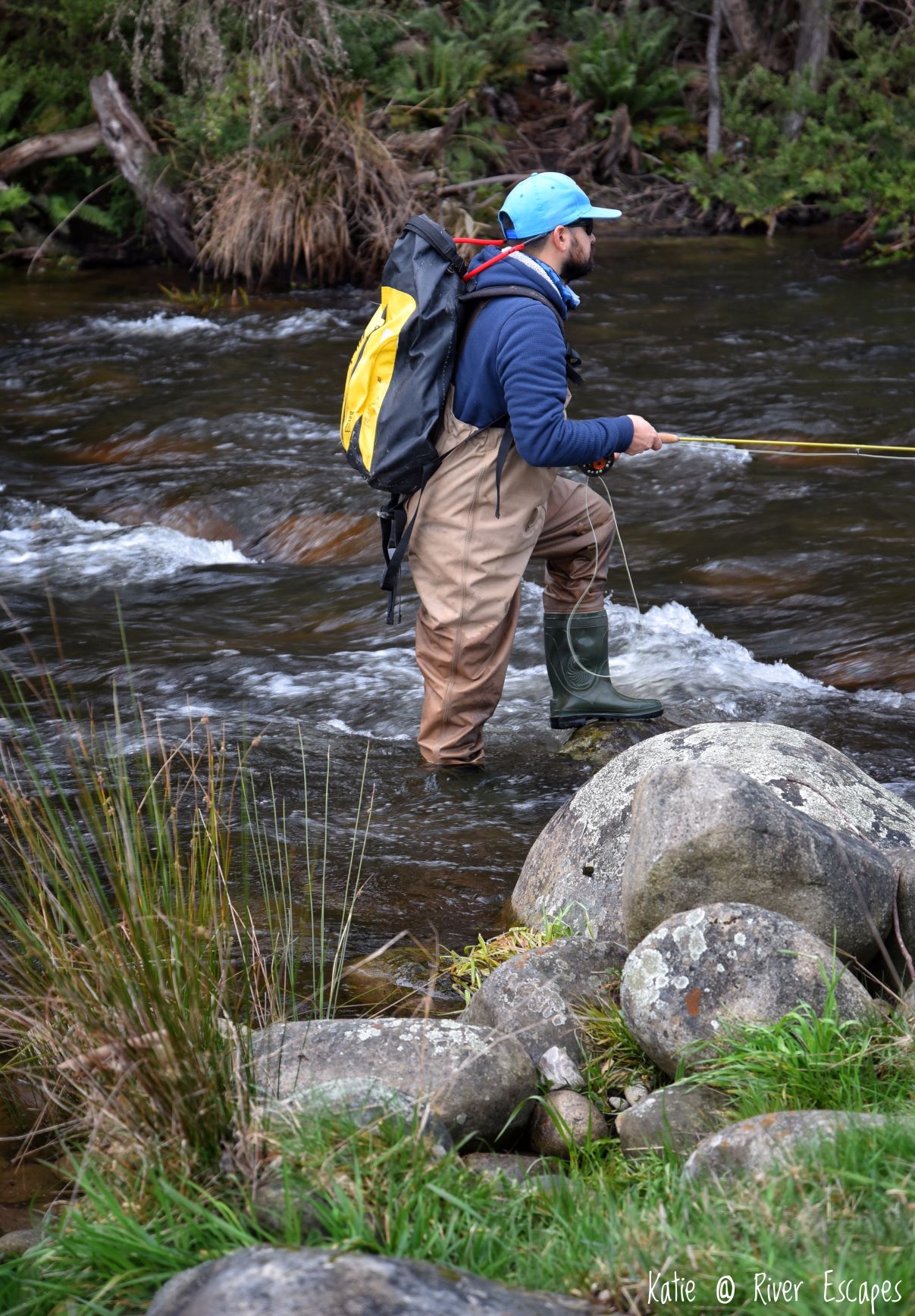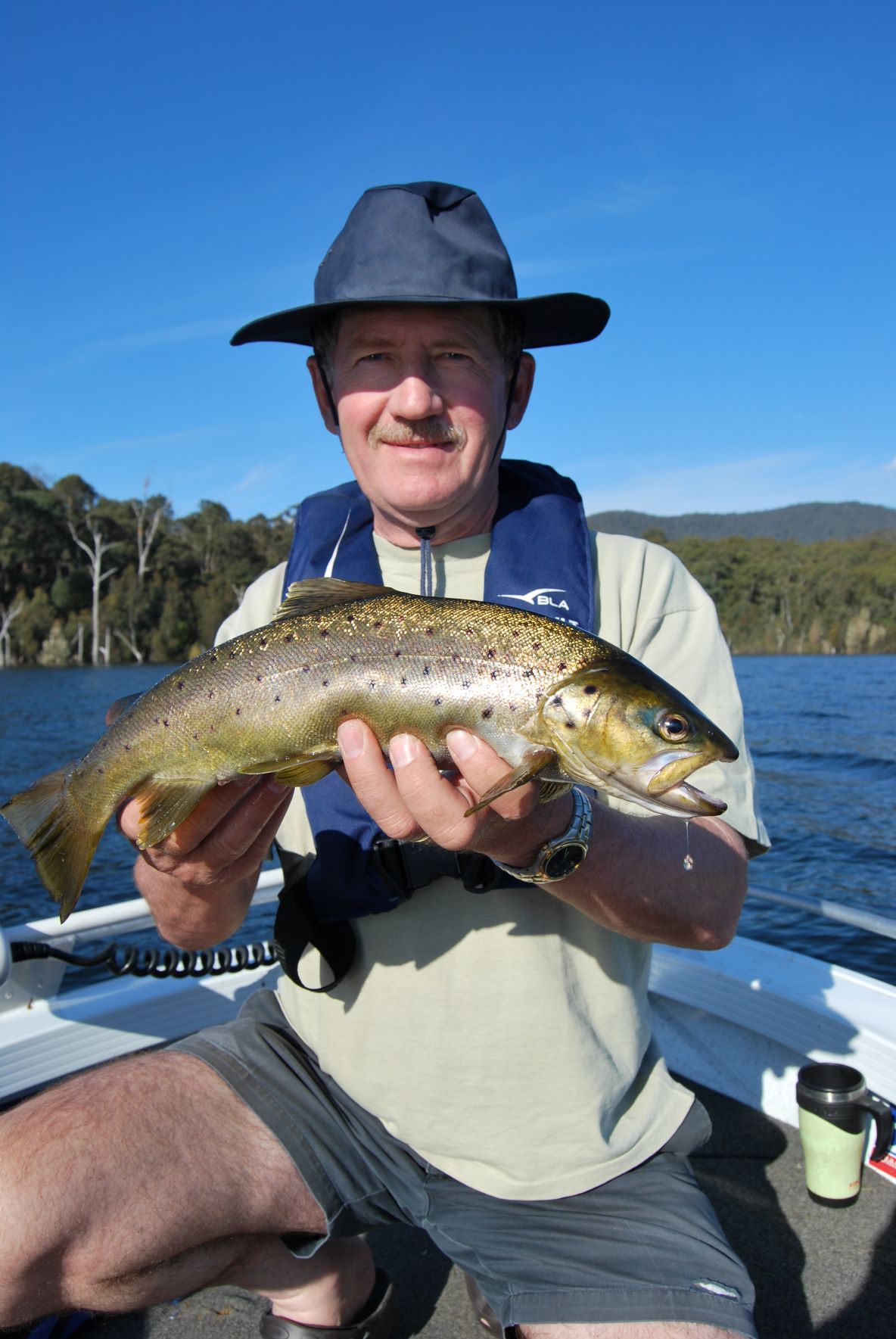How to catch trout
Lake fishing
Trout can be caught in several ways depending on your preferred method and level of enthusiasm. Boat fishers commonly troll lures on the surface, which is called flatlining. Others troll lures and bait deeper with specialised devices and weighted lines that are designed to get the lure well down. Shore-based fishers are well served by a mixture of walking the shoreline with a spin rod casting lures or covering water with a fly rod. If staying put is your thing then bait fishing can be a family friendly way to enjoy time outside and enjoy the serenity. Trout spook easily and are smart, able to detect thick lines or poorly presented baits so paying attention to the details is important.
Trolling
The beauty of trolling large bodies of water is you can actively find where the fish are holding on any given day. Trout can be caught in open water too. It’s not uncommon to find them in the middle of a lake near the surface, scouting for small baitfish. Trollers usually go as slow as their boats allow and have a couple of lines out behind the boat, set at a variety of depths. Lures to consider include the Tasmanian Devil range of winged lures and bibbed minnows that resemble baitfish. Worms and mudeyes can be trolled too, usually behind an attractor such as a Ford Fender, dodger or set of cowbells.
Trollers can also use specialist methods to vary the depth of their lures. Downriggers, paravanes, trolling sinkers and lead core lines are all ways to get a lure down deeper. A 6-7ft medium actioned rod with a 2500 sized reel, 3kg braided line and 4kg monofilament or fluorocarbon leader of about 6ft is perfect.
Shore-based fishers
Active fishers love to walk or wade their way around lake edges with a fly or spin rod in hand, employing a ‘cast and move’ strategy. By firing a series of fanned out casts in front of you and then moving to the left or right and repeating the process you can cover a section of shoreline with a great chance of intersecting an active trout. This prospecting style of fishing is served well by the same lures you’d troll with, favouring ones that can be flung a long way.
Fly fishers will fare well using wet flies but won’t be able to cover nearly as much water as those casting lure with spin gear. Longer rods will cast further to cover more water, so a 7-7.5ft medium action rod with 2500 size reel, 3kg braided line and three or 4kg leader of about 6 ft will serve you well. For fly casters, a forward weighted line for longer casts is essential or focus on low light periods and target lake edges.
Bait fishers can do well fishing a variety of natural and artificial baits. Mudeyes, glassies, earth worms and PowerBait work well, but if you know exactly what the trout are feeding on and can replicate it you’ll be on a winner. It pays to match hook sizes carefully with bait sizes as any trout will inspect your bait thoroughly before eating it. If it doesn’t look amazing to you and good enough to eat, then a trout will be the same! With bait fishing it pays to use rigs that minimise anchoring the bait to the bottom. Use the lightest sinkers you can or use a float to keep baits from getting lost in weed. The same tackle for shore casting is fine, just add in a rod holder so you can secure the outfit into the lakeside soil. In the early morning and evening trout cruise the edges, especially if a lake is rising, so you don’t be afraid of fishing close into the shore.
 Stream and river fishing
Stream and river fishing
Flowing, clear water and trout go hand in hand, however extracting them can be a challenge! This is strictly a land-based adventure although in some cases a drift boat or kayak can navigate bigger water. Trout in these environments are aware of what is going on above and below the water, so it pays to approach the water carefully by treading lightly and moving slowly. A few minutes taking in the scene is time well spent as trout in the pool may give away their location, which is a great advantage before you cast. Trout will lie in wait around structure, but when active can be in plain sight at times.
Casting lures and fly fishing
The size of the river will determine how you go about casting lures and fly fishing. Casting small lures is an awesome way to actively prospect for trout. Small spinners, soft plastics and suspending bibbed crankbait lures do very well in this environment, all imitating a small baitfish trundling down and across the current. The skill for the fisher is presenting the lure naturally whilst not getting snagged on rocks or vegetation. It’s another reason to have a good look before casting, ensuring your first cast counts! A shorter 6ft medium actioned rod with a 1000 or 2000 size reel, 2kg braided line and 3kg leader of about 6ft is perfect when lure or bait fishing rivers.
Fly fishing
Trout feed on specific aquatic and terrestrial insects that are too small to cast on conventional tackle. This makes fly fishing a highly specialised method that can be effective in skilled hands. A fly rod that would cover most fishing situations in Victoria is a carbon fibre, four-to-six-weight with a moderate action that’s matched with a 6 weight-forward floating, intermediate or sinking line (depending on where you want to target trout in the water column).
Bait fishing
Presenting small natural baits in rivers is a finesse activity. Success will be dictated by how well you can naturally present the bait and matching the food the trout are hunting at that time of year. A mudeye, single scrubworm or grasshopper trundled downstream with no weight whatsoever is likely to be eaten by trout in the mood. A pair of waders is recommended so you can position yourself properly in the river and drift the right lines safely. In slower moving backwaters, or the lower reaches of rivers, split shot (type of sinker) or a small running sinker can be used to keep the bait on the bottom.
Click here for catch limits on brown trout

